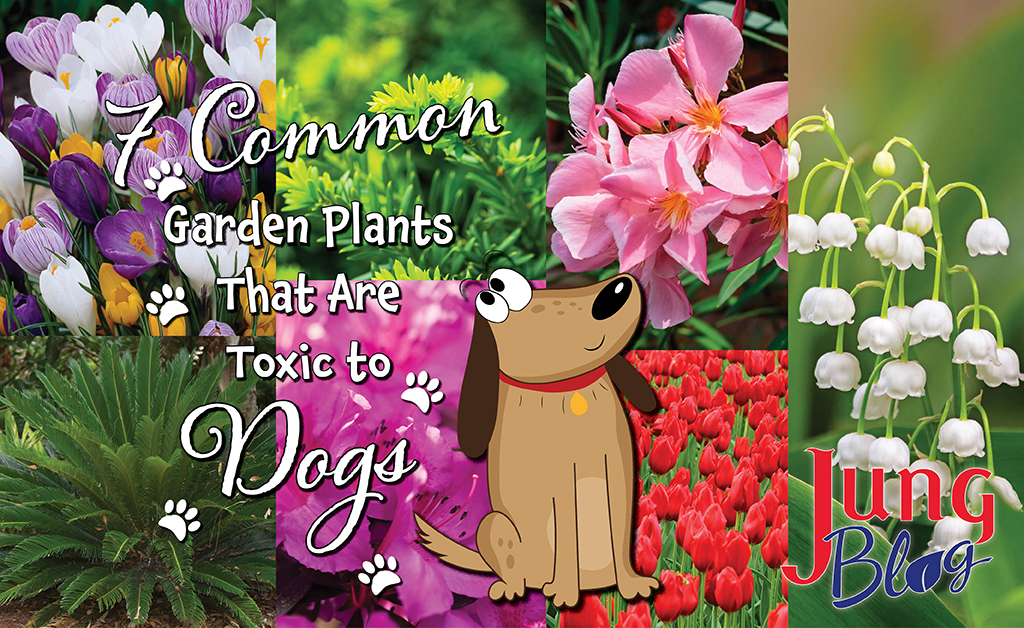
Dogs are naturally curious and love to use their olfactive superpowers on walks, in garden beds, and in front and backyards. While some garden vegetation is completely harmless for our furry family members, other vegetation is poisonous. Your garden may contain poisonous plants that in a few cases can be lethal for the family dog.
Some plants may cause diarrhea, vomiting, or discomfort, while others can lead to liver damage, convulsions, and kidney failure. Unfortunately, many of these plants are more common than one might imagine. If you have any of these plants on your property, you may consider relocating them (your dog’s pee can also be toxic to your precious plants). Or if you happen to find these plants while on your daily walk or at your favorite park, keep your pup away from them.
Sago Palm
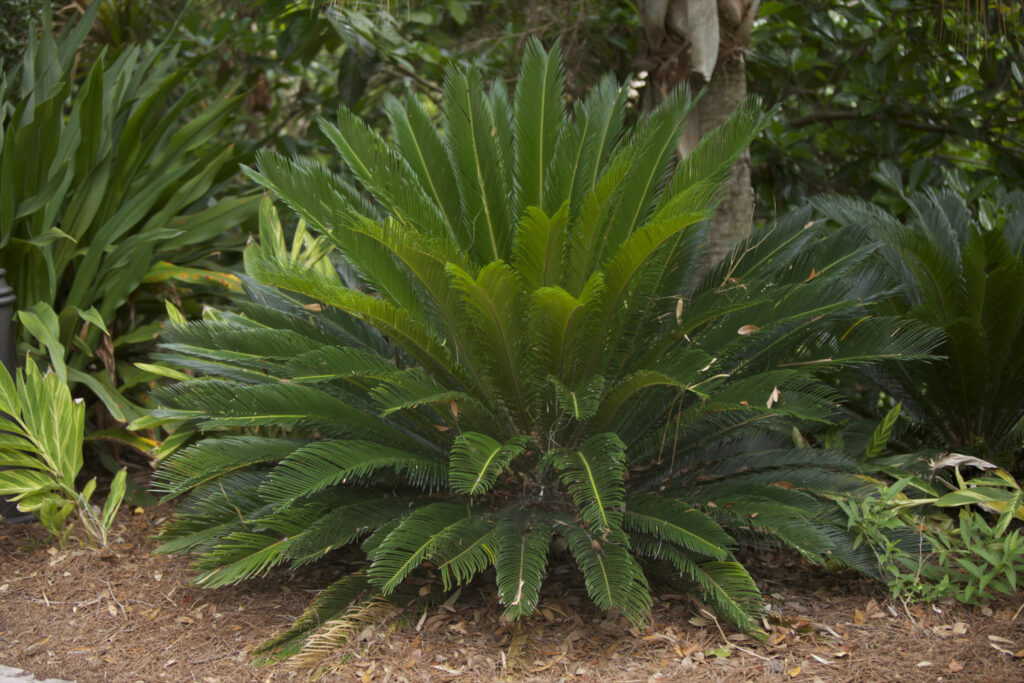
This is a lovely palm tree with stiff arching fronds. It is cultivated both indoors and outside. The ASPCA website indicates that Sago Palms are incredibly toxic to all pets, not just your favorite pooch. Symptoms of Sago Palm poisoning include diarrhea and vomiting.
In severe Sago Palm poisoning, your pet may experience seizures and liver failure. Sago Palm poisoning can prove to be fatal for our four-legged family members. Foliage and tree bark are poisonous, but keep in mind that the tree’s nuts or seeds contain the most toxins.
Oleander
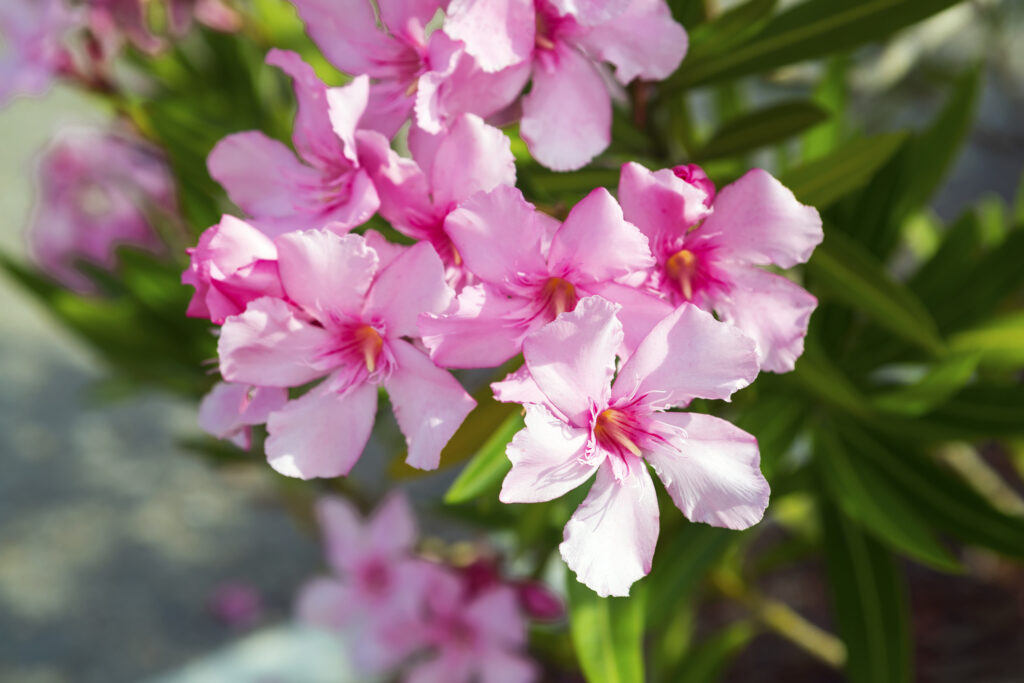
The oleander is a favorite of landscapers, especially along the U.S. west coast for its lovely flowers. Used primarily as a landscaping shrub, it can grow to heights of 12 feet making it a preferred choice for those seeking a bit more privacy. The Oleander produces its prized blooms in shades of pink, red, white, and yellow.
Every part of this plant presents a risk to canines as it is entirely poisonous. It contains glycosides that can affect heart rate and rhythm. Other symptoms of Oleander poisoning include drooling, diarrhea, and digestive tract abdominal pain. Severe Oleander poisoning can be fatal.
Lily of the Valley
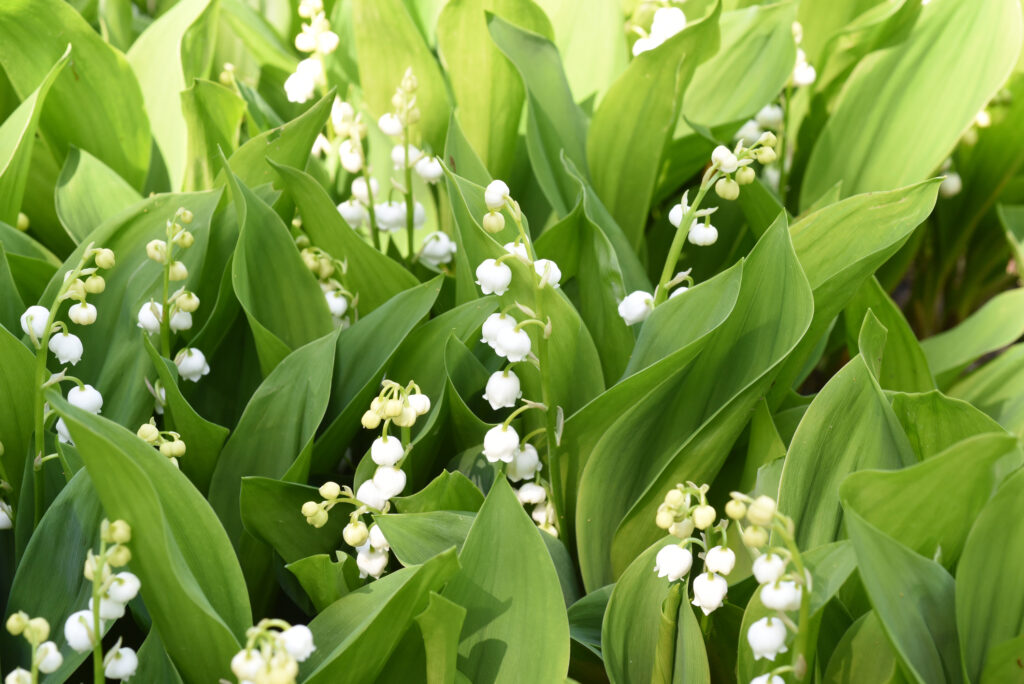
Who would imagine that these pretty, delicate bell-shaped flowers could be so toxic to man’s best friend? These popular sweet-smelling garden plants are a favorite because they thrive in a garden’s shady spots. Even a minuscule portion of these plants can create havoc with your pup’s heart. The ingestion of stems, bulbs, or foliage can cause disorientation, vomiting, and a drop in the pooch’s blood pressure. Severe Lily of the Valley poisoning can cause seizures or lead to a coma.
Tulips
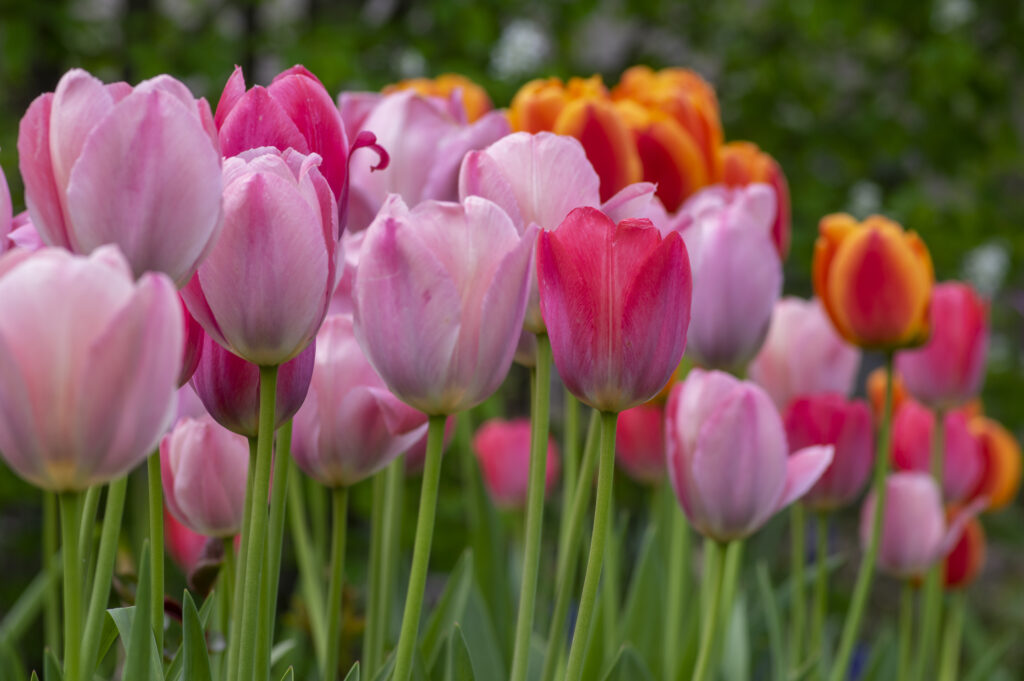
One of spring’s favorite garden blooms, Canine parents should choose another flower for garden color. Lance-shaped foliage can cause stomach and digestive tract distress, but severe poisoning risk lies in the tulip’s bulb. If your pup is a digger in the yard, leave tulips out of your spring gardening selections.
Tulip bulbs contain high concentrations of toxins. When ingested they can cause an extremely painful stomach, a loss of appetite, and depression in canines.
Azaleas a.k.a. Rhododendron
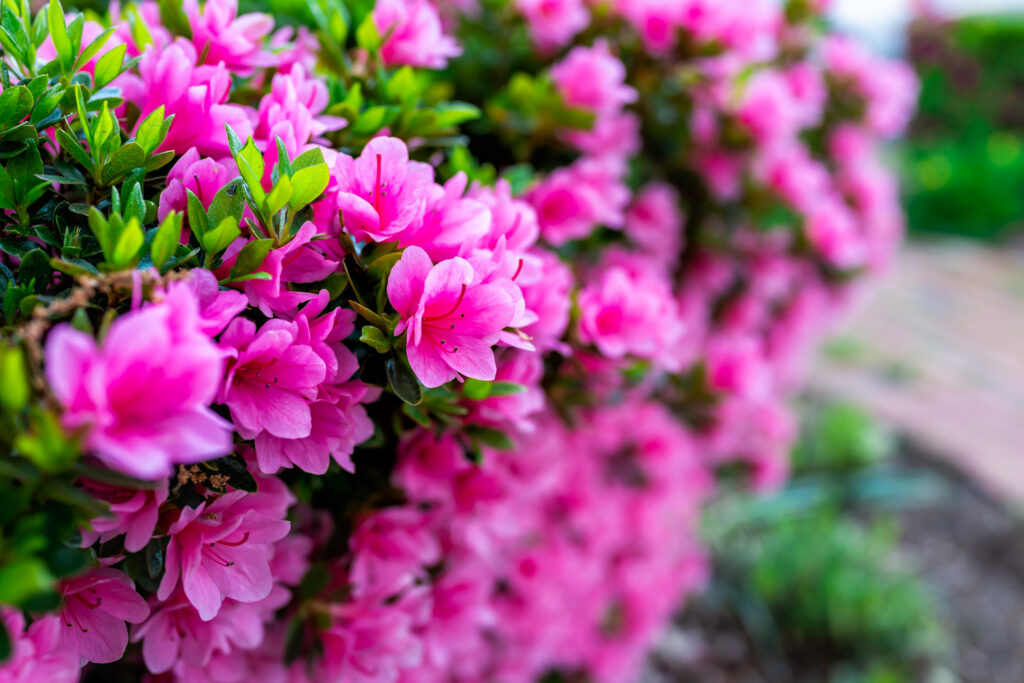
An immensely popular flowering shrub that can be seen throughout the entire country and features more than 250 species, all parts of the lovely Azalea shrub are harbingers of Grayanotoxins. How severe poisoning symptoms are will depend on how much of this plant has been ingested. It’s sufficient for a dog to eat 0.2% of its body weight to provoke a reaction.
Generally, dogs may get off with just an upset stomach or excessive salivation, but for those canines that eat a lot, weakness and tremors may appear. Azalea poisoning can also cause a drop in blood pressure and an irregular heartbeat. Azalea ingestion can be fatal.
Autumn Crocus
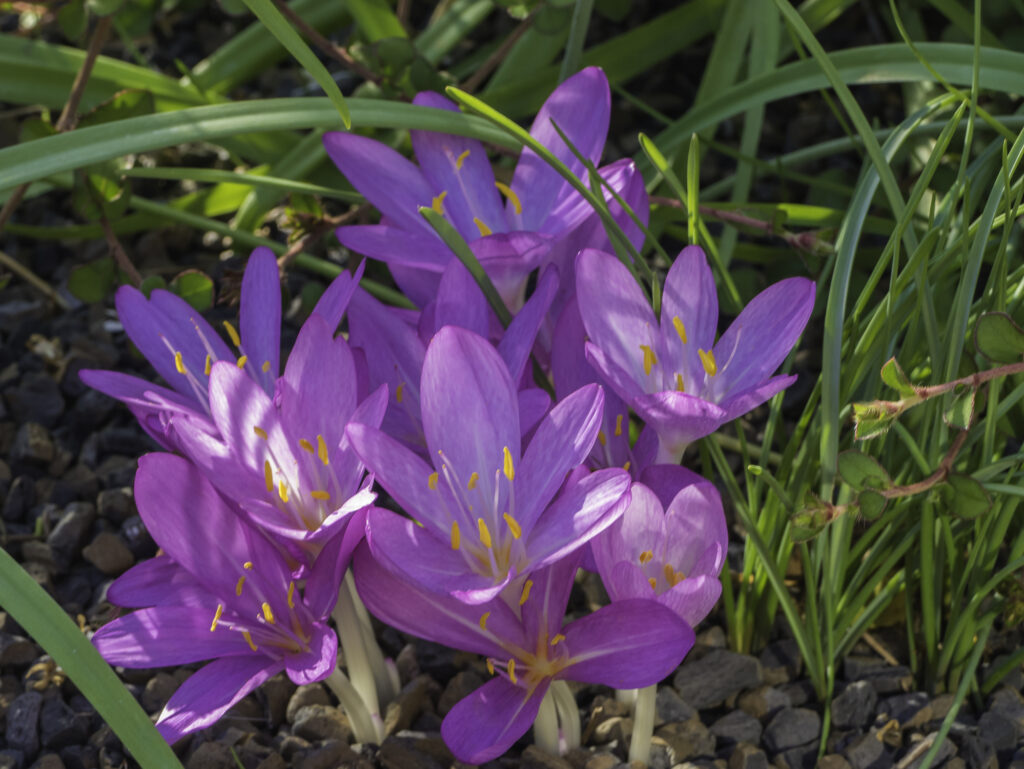
This lovely flowering plant is highly poisonous to canines. The Colchicum autumnale is the crocus species that pose the greatest risk to our furry BFFs. A native of the Mediterranean and Asia, the entire plant is toxic. As in the Tulip, the highest concentration of toxins is found in the plant’s bulb. Colchicine is the toxin contained in the plant and it can be lethal with only 0.4 mg per pound of your pooch’s weight being ingested.
Autumn Crocus poisoning symptoms may include bloody vomiting or diarrhea, burning of the mouth or throat, seizures, heart arrhythmia, failure of kidneys or liver, or even sudden death.
Yew Species
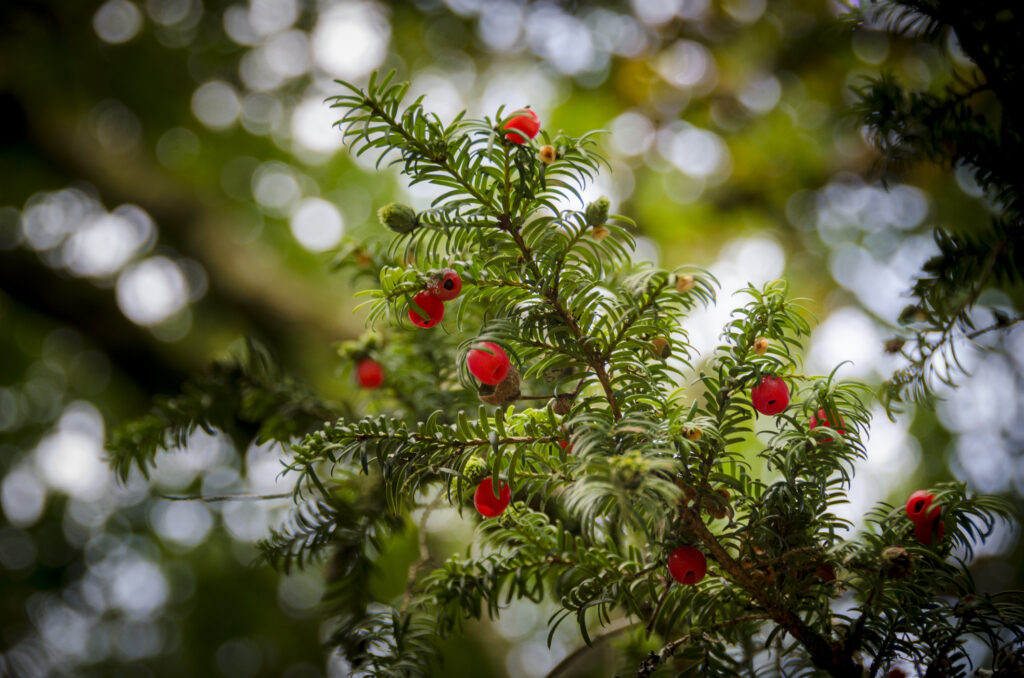
There are numerous Yew species found in gardens, but the most toxic to our pups are Chinese Yew (Taxus Chinensis), English Yew (Taxus Baccata), and Japanese Yew (Taxus Cuspidate). These are popular evergreen shrubs that are regularly used in landscaping because they are tolerant to winter weather.
They contain Taxine A and B, both of which are poisonous to the canine heart. It’s enough for your pup to chew on a branch to provoke symptoms which may include excessive salivation and drooling, dilated pupils, diarrhea, vomiting, difficulty breathing, tremors or seizures, or sudden variations in heartbeat and blood pressure. Yew ingestion can also be the cause of sudden death. Luckily Yew has a bitter taste, so most pups will avoid eating or chewing this plant.
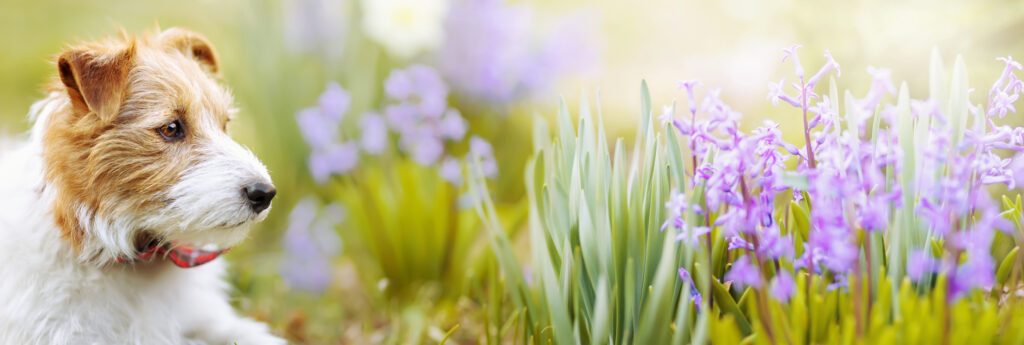
If your dog has ingested a poisonous plant, call your vet or local animal poison control center immediately. Take a photograph of the plant your pup has chewed on or eaten and get your dog to emergency veterinarian services asap. Pets have a better chance of survival and of more minor damage, the sooner they receive medical help in cases of poisoning.
Other Recommended Reading

- How To Dog-Proof Your Garden
- Pet-Friendly Plants & Landscaping For All Seasons
- Six Tips To Create The Perfect Dog-Friendly Garden

At Jung Seed Co, we strive to be your go-to guide for all your gardening needs. Our YouTube channel Jung Garden Center now includes our new video series All Things Green where our experts provide gardening tips for all levels of gardeners. When you need reliable gardening advice, turn to the trusted experts at Jung.
View our new catalog online or browse our website for all of your gardening favorites. To receive info on new products, exclusive deals, and specials, be sure to sign up for our weekly email. Join our Facebook page, to discuss all things gardening!
About the Author: If you are interested in writing an article for the Jung Blog email us at – info@jungseed.com.